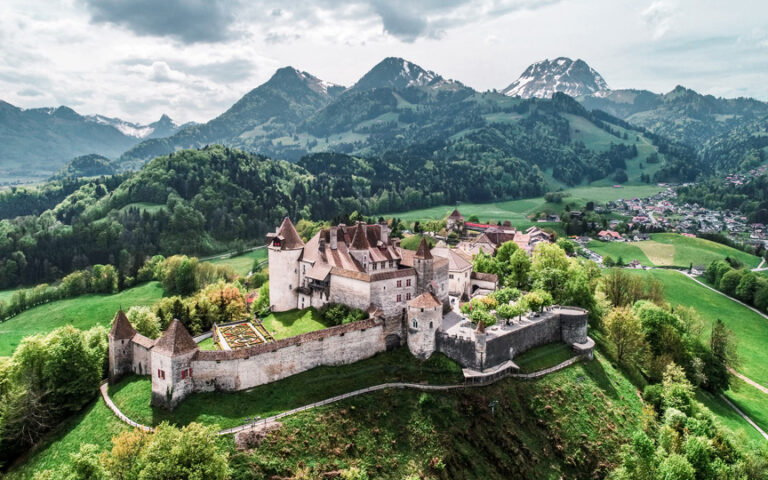The roadwork and excavating which were necessary for the building of the new motorway in the 1980’s brought to light unexpected traces of a very early civilisation in La Gruyère.
Various small objects made of silex prove that early reindeer hunters lived in the area about 12’000 B.C.
As from 888 A.D., Gruyère belonged to the then Kingdom of Burgundy for two centuries. Later, in 1195, Count Rudolph, made over this lands to the Episcopal diocese of Lausanne and retained the castle and village of Gruyères, with land going right up the Sarine valley to Rougemont near Château d’Oex, as an independent outpost of the dioceses.
While Fribourg was developing under the successive domination of the Zaehringen, Kybourg and Hapsburg families, the county of Gruyère kept its independence but went through troubled waters. At first it was “protected” by the Dukes of Savoy but later it was again coveted by the Bishops of Lausanne. The Bishops of Lausanne finally used the town of Bulle as a fortress and built the castle of Bulle. In the end, the last Count of Gruyères, Count Michel, could no longer face his creditors, chiefly Bern and Fribourg. He want bankrupt and disappeared. The Country as it was then, was split between Bern and Fribourg; the lands of the upper valley going to Bern and the actual “city” of Gruyères and its adjoining lands to Fribourg. During the Reformation, the canton of Fribourg opted to remain Catholic and so, of course, Gruyère was compelled to do likewise. It is not surprising, then, that a revolution broke out in 1781. It was led by Nicolas Chenaux whose statue can be seen in front of the castle of Bulle raising and avenging fist in the direction of Fribourg.
The district, as it is now, was founded in 1848. Its borders are based on natural boundaries and cultural traditions.
















